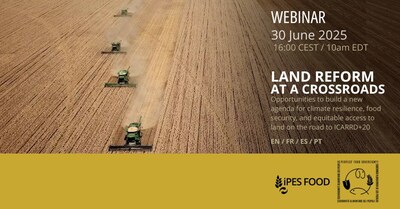RRI | January 2013
The Financial Risks of Insecure Land Tenure
An Investment View
The Munden Project
IntroductionIn recent years, one of the oldest asset classes in investment – land – has become an issue of international concern and scrutiny. Land acquisitions are being announced at a breakneck pace1 as companies look to produce more food, wood fiber, minerals and energy.2
Through a variety of mechanisms, the capital markets have enabled this acquisition spree, particularly in emerging economies. The undeniably high and sustained profit potential of this land is thought to be offset by meager, manageable costs. Not only is the land itself cheap, but the ongoing outlays required to convert that land’s output into saleable goods is quite low.
This all seems very compelling when confined to spreadsheets, but as these acquisitions become more common, we are beginning to see substantive discrepancies between investment concept and operational practice.
In examining the evidence, a pattern emerges. Many investors and operators have committed time, money and effort without understanding some considerable risks, ones usually considered externalities in the normal course of business.
This report gives perspective on one such risk. Completely unknown to most investors, “land tenure” is a catch-all phrase used by field specialists to define a set of problems related to control over a given parcel of land.
Property rights in many emerging markets are dysfunctional to the point that ownership of land can be granted to an investor without the tens of thousands of people living on, or dependent on, that land knowing about it.
Generally tied to their land for many generations, these people have little interest in, or have no reasonable option for, moving to urban areas and are practically impossible to relocate. In other words, the risk is unavoidable once these investments are made.
This report shows that unresolved conflicts over land tenure significantly augment the financial risks for companies in infrastructure, mining, agriculture and forestry. By themselves, delays caused by land tenure problems can inflate a project's expenditures by an order of magnitude - and in some cases these losses have even been great enough to endanger the future of the corporate parent itself.
After examining the case studies described in the report, we believe land tenure risk is substantial enough to merit serious attention from land-use companies and those who finance their activities.
Moreover, we think that attention should be active rather than passively hoping for these issues to "go away" or "get cleared up".
Specifically, we find much promise in the concept of creating a vehicle for investors to manage those risks that would support the policy and technical actions to secure the land rights of historic occupants in an investment area and more broadly in the host
country.
With that said, we hasten to add that this report is but a first step. It is not an implementation-ready method for assessing risks posed by insecure land tenure. To build such a method, the next step is to move beyond the specific cases examined here, and to paint a more detailed picture of tenure-related risk. Such a generalizable risk assessment would result in a quantitative risk model for use by creditors and investors and form the basis of the aforementioned risk management vehicle.
Our initial examination shows the potential for bottom-line financial damage range from massively increased operating costs – as much as 29 times over a normal baseline scenario, according to our modeling – to outright abandonment of an up-and-running operation. And this modeling finds firm empirical support in the case studies we analyzed (presented from page 23).
If supported by more rigorous exploration, these financial risks may be significant enough to change the calculus of investing in emerging markets. They suggest a substantial problem. We do not consider the specifics of solving this problem within this report, which will require further research. Still, our initial examination suggests that risk analysis will not be enough. If the risks prove to be as substantial as this analysis suggests, it will be imperative to create some way to fully understand and address land tenure issues. Otherwise, the identification of the risk will only serve to push capital away from investments, leaving some very real problems unresolved and important opportunities for development foregone.
Although tenure issues are too extensive and complicated for individual firms and investors to resolve independently, risk provides a strong incentive for the private sector to contribute to clarifying and securing tenure rights. We recognize that some major investors (such as the International Finance Corporation) have developed and implemented sound practices and safeguards to evaluate and attenuate tenure risks. But these investors represent a small share of the overall capital investments relevant to the analysis in this paper. A firm signal of support for tenure reform from national governments and international investors would catalyze a change in approach.
This step would clear the way for translating impetus into action.
1. This trend has been called the “the global land rush” and has been driven by the expectation of rising commodity demand. Data available at http://landportal.info/landmatrix; see also Deininger & Byerlee (2011) Rising Global Interest in Farmland, World Bank
2. The 2011/2012 European Report on Development (2012), Confronting Scarcity: Managing Water, Energy and Land for Inclusive and Sustainable Growth, European Union












